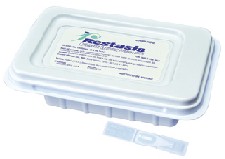Q. I have a new patient with a moderately severe dry eye with associated ocular surface disease. After appropriate diagnostic testing, I diagnosed her with keratoconjunctivitis sicca (KCS). I feel she would benefit from Restasis (cyclosporine, Allergan), but she is concerned about the cost. Should I try other options first?

A. The answer depends on whom you ask. For example, optometrist William Townsend of Canyon, Texas, says that he would definitely recommend Restasis as a first line of treatment if this patients dry eye is inflammatory. As optometrists, we really need to portray dry eye syndrome as what it is: an ocular surface disease that, like diabetes, has an enormous impact on peoples lives, he says. And so we really need to put into perspective the fact that this is something that is going to change our patients lives in terms of their comfort and their ability to function.
Likewise, Azusa, Calif., optometrist Milton Hom would turn to Restasis first if the patient needed it. First, he would ask whats causing the KCS. If its lid margin disease, by all means, treat that first, he says. However, if this patient does not have a distribution problem or lid margin disease, Restasis works extremely well for severe dry eye.
Other O.D.s offer these alternatives to Restasis:
Start with an artificial tear. Steven Newman, O.D., of Miami suggests the doctor start this patient on over-the-counter drops at least four to six times daily for at least 30 days. If she has already been using artificial tears to no avail, he says, consider switching the brand or increasing the dosage.
Philadelphia optometrist Andrew S. Gurwood agrees. We know Restasis is effective. However, the patient is often required to take the medication routinely for several months, at a significant cost, before the doctor and patient actually realize its full effect, he says. That is why in my opinion, aqueous tear supplements should make up the first rung of the ladder.
While many patients begin to experience results within the first month of Restasis therapy, it takes three to six months to see the maximal effects.1 Also, most OTC drops retail for about $10 a month vs. Restasis, which currently retails for $90 to $100 a month.

Restasis is a topical immunomodulator for patients whose tear production is presumed to be suppressed due to ocular inflammation associated with KCS.
Encourage diet and lifestyle changes. Encourage her to avoid smoking and consuming high amounts of caffeine, to increase her water intake and to force blink if she spends a lot of time in front of the computer. All of these things have been proven to help the problem, says Kansas City, Mo., optometrist Paul M. Karpecki.
Consider punctal occlusion. Punctal occlusion helps retain what tears are being produced. Patients with significant inflammation must be treated prior to inserting plugs so as not to exacerbate the already compromised ocular surface.
Use loteprednol. This site-specific ester steroid has shown an ex-cellent safety profile, and I believe at q.i.d. for one month would work well on the patient described, Dr. Karpecki says. Some 159 patients with seasonal or perennial allergic conjunctivitis who continuously used loteprednol 0.2% for more than 12 months (continuous use ranged from a cumulative total of 120 drops per eye to 3,741 drops per eye) had no reported adverse effects.2
Doctors who advocate Restasis as first line treatment also say its covered by most insurance plans and, as a result, patients pay far less than retail. Restasis product manager Randy Adams says close to 90% of third-party claims for restasis are covered and as a result, pa-tients are paying between $20 to $30 co-pays.
1. Sall K, Stevenson OD, Mundorf TK, Reis BL. Two multicenter randomized studies of the efficacy and safety of cyclosporine ophthalmic emulsion in moderate to severe dry eye disease. CsA Phase 3 Study Group. Ophthalmology 2000 Apr;107(4):631-9.
2. Ilyas H, Slonim CB, Braswell GR, Favetta JR, Schulman M. Long-term safety of loteprednol etabonate 0.2% in the treatment of seasonal and perennial allergic conjunctivitis. Eye Contact Lens 2004 Jan;30(1):10-3.

